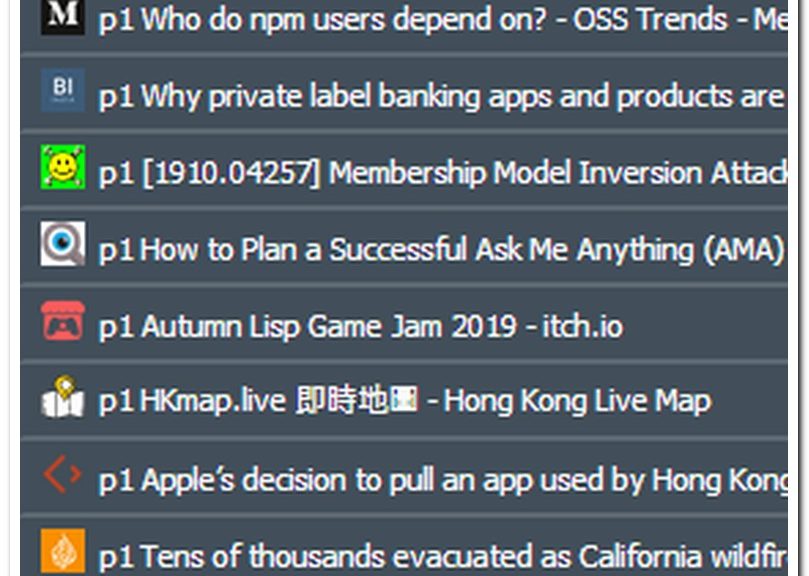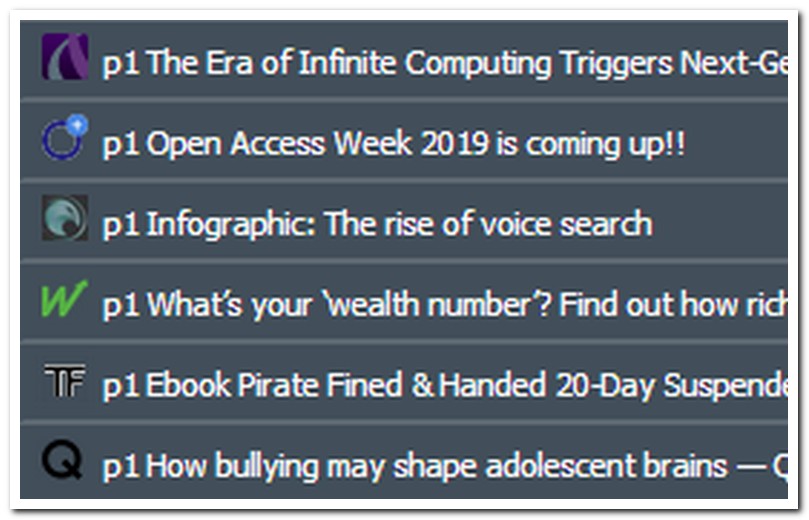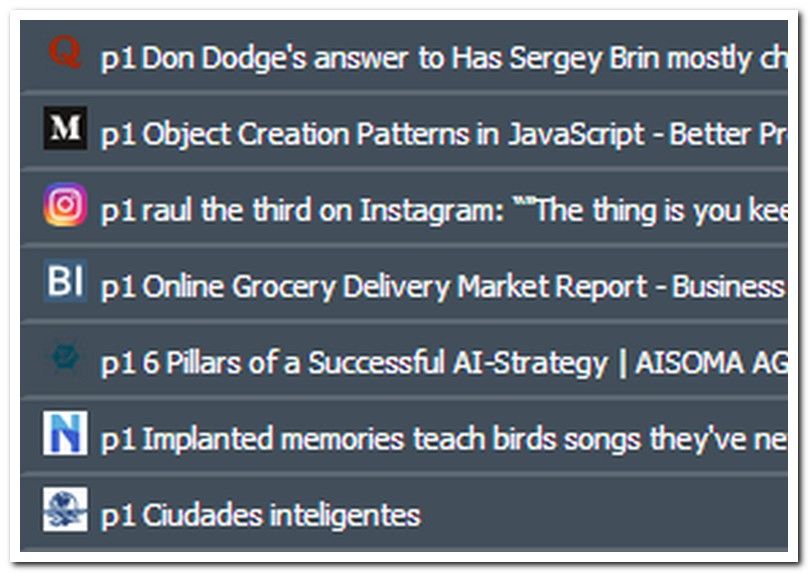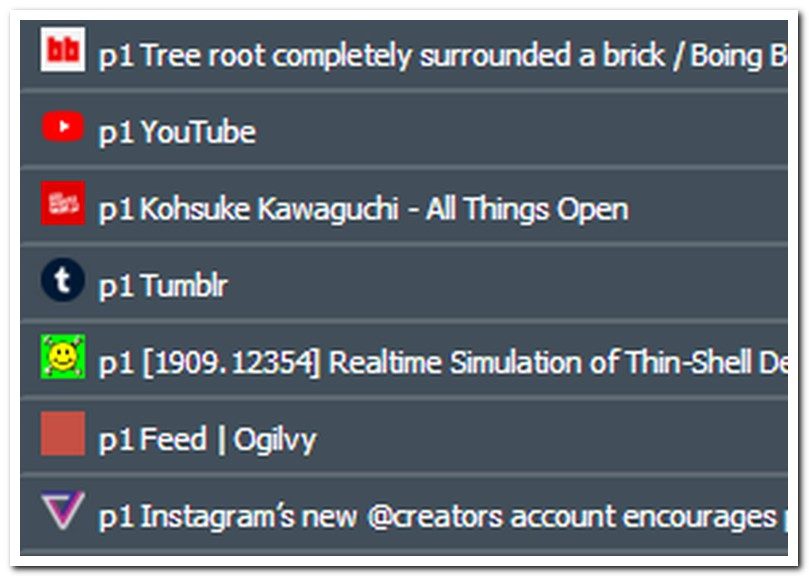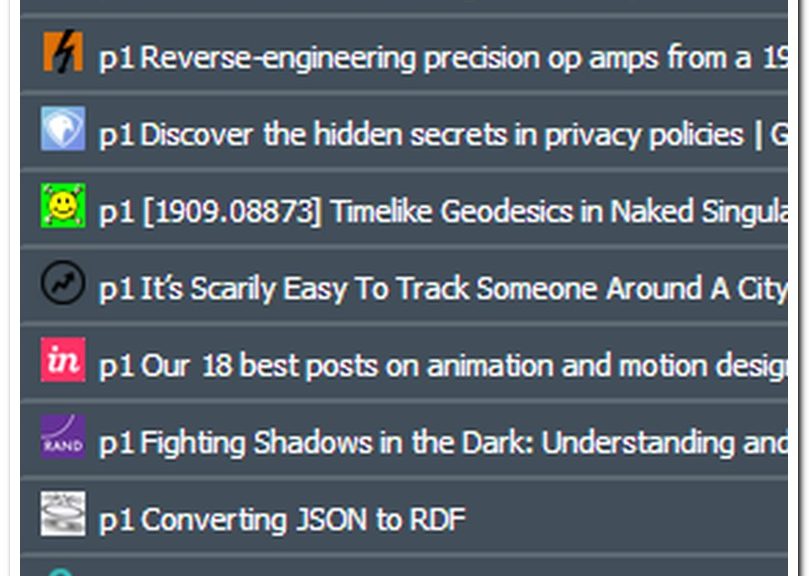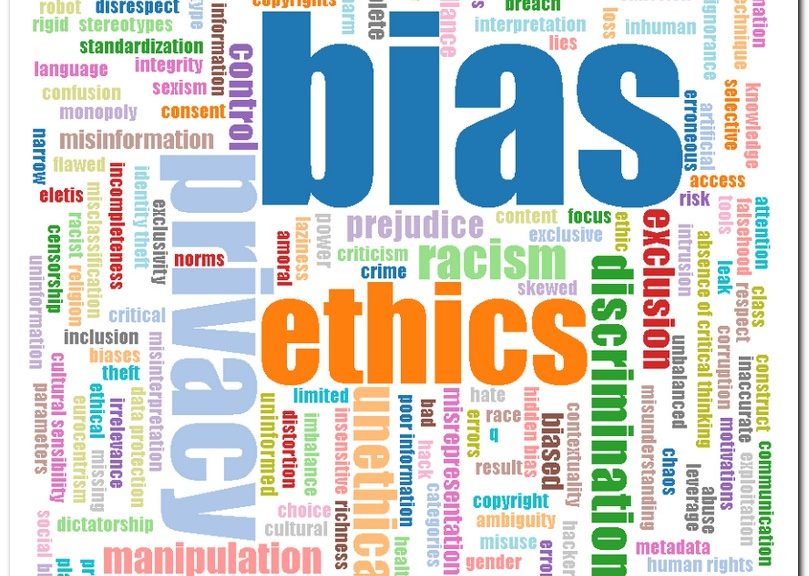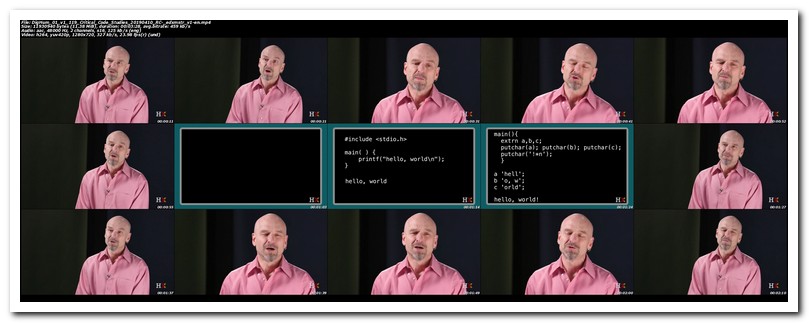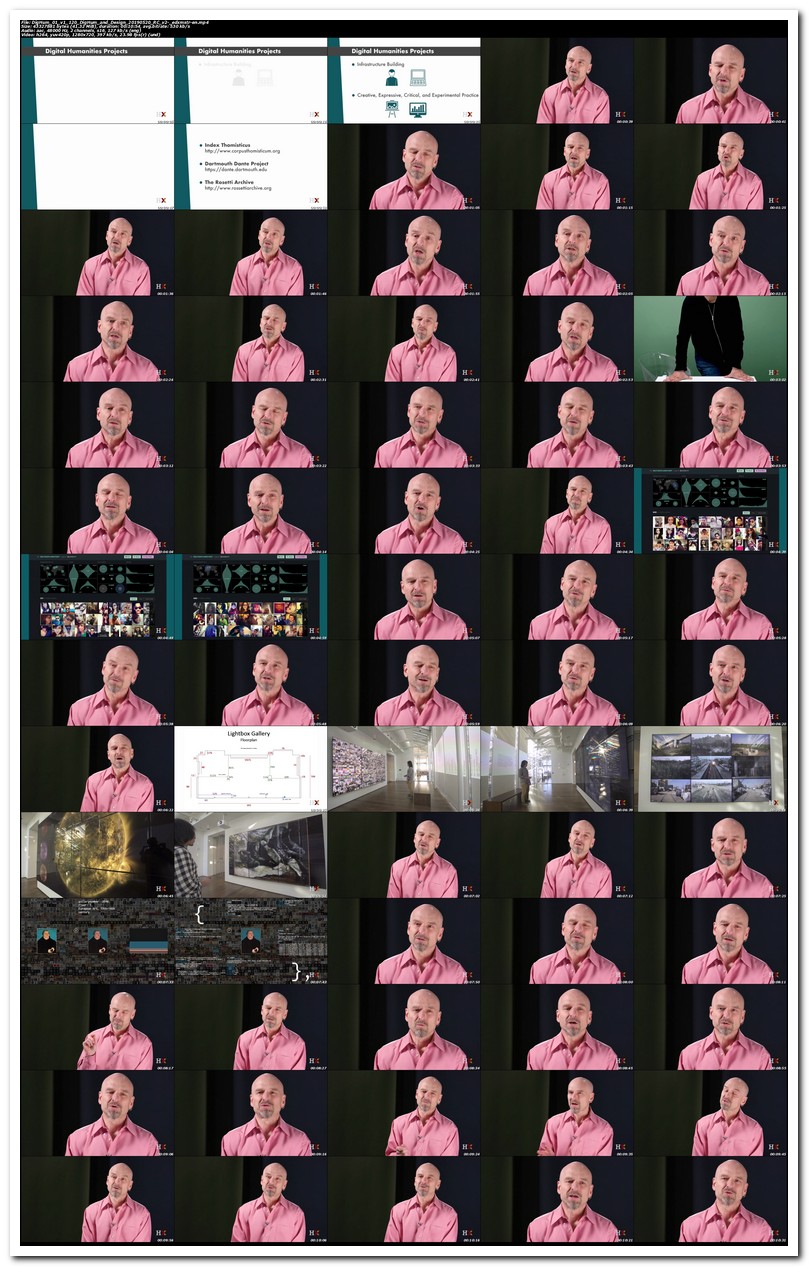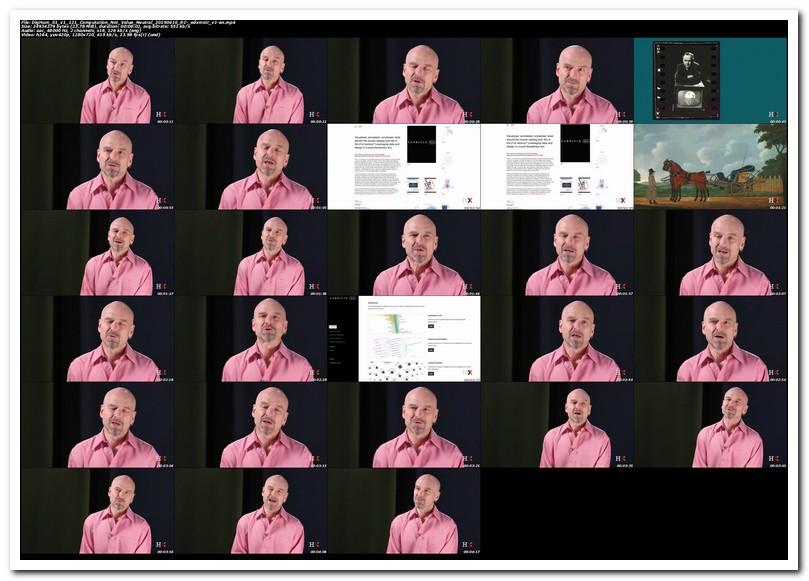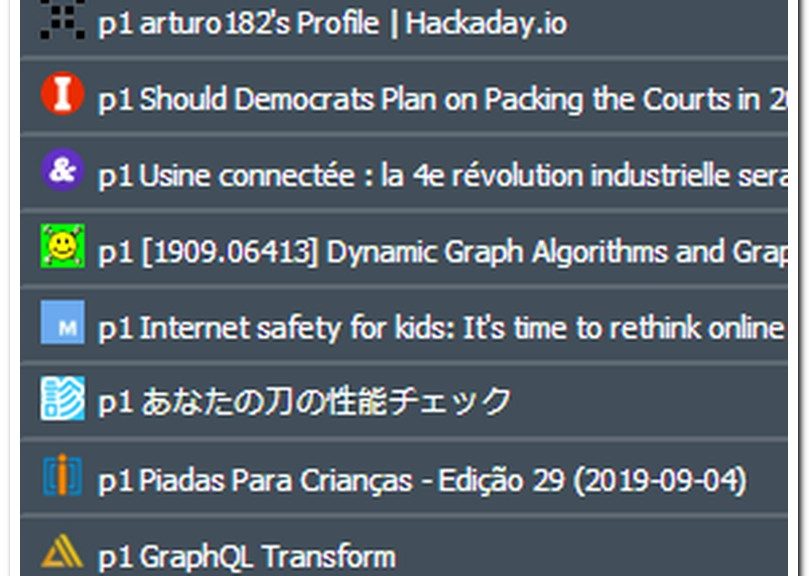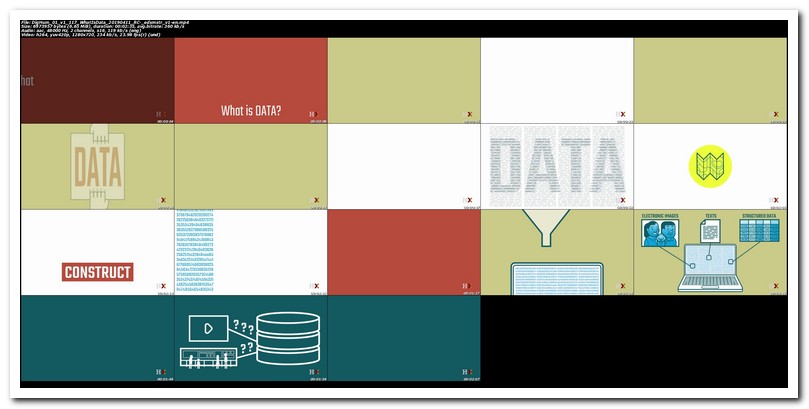I am an avid WWW surfer, with hundreds of websites visited each month, sometimes daily. I bookmark them all, at least for logging purposes. These posts having the "urls" category, capture what was on my browser on a specific date. I hope you enjoy some of these shared resources.
- https://www.inc.com/quora/how-a-liberal-arts-education-can-help-your-career.html
- https://gizmodo.com/the-trickle-down-disaster-of-automation-1838974516
- https://www.lemonde.fr/planete/article/2019/10/12/bresil-la-deforestation-en-amazonie-a-augmente-de-93-entre-janvier-et-septembre_6015223_3244.html
- https://mitsloan.mit.edu/ideas-made-to-matter/a-guide-to-mit-sloan-management-reviews-strategic-agility-project
- https://www.theverge.com/2019/10/12/20908567/apple-macos-catalina-breaking-apps-32-bit-support-how-to-prepare-avoid-update
- https://www.engadget.com/2019/10/12/recommended-reading-your-airpods-are-going-to-die/
- https://www.youtube.com/watch?v=-Ez53J0vj9c
- https://learn.g2.com/benefits-of-cloud-computing
- https://mashable.com/article/blizzard-hearthstone-blitzchung-ban-hong-kong-protest/?europe=true
- https://www.bloomberg.com/news/articles/2019-10-12/french-lottery-ipo-scheduled-for-november-le-maire-says
- https://news.developer.nvidia.com/drive-labs-eliminating-collisions-with-safety-force-field/?ncid=so-face-98850&fbclid=IwAR2DE8J1460T1oUS6utaqB1J8yFkmlX-wFDtoid5eyTNf3BTw2mb-4NQFyE
- http://techrights.org/wiki/index.php/Free_Software_timeline
- https://mashable.com/article/how-often-should-i-clean-my-water-bottle/?europe=true&__twitter_impression=true
- https://blog.hasura.io/add-authentication-and-authorization-to-next-js-8-serverless-apps-using-jwt-and-graphql/
- https://swisscognitive.us14.list-manage.com/subscribe?u=db344b4f38cbe151dcff98a27&id=f692c6c173
- https://www.zdnet.com/article/these-are-the-29-countries-vulnerable-to-simjacker-attacks/
- http://www.musicofsound.co.nz/blog/beautiful-tech-roland-re-201-space-echo
- https://towardsdatascience.com/ai-architecture-f9d78c6958e0?gi=eef7349e2f9
- https://www.pewinternet.org/2019/10/09/americans-and-digital-knowledge/
- https://www.smartbrief.com/original/2019/10/7-deadly-sins-development-planning-part-1
- https://www.aljazeera.com/news/2019/10/tokyo-braces-hagibis-worst-typhoon-hit-city-60-years-191012054641712.html
- https://blogs.bl.uk/asian-and-african/2018/09/menak-amir-hamza-the-javanese-version-of-the-hamzanama.html
- https://www.lusa.pt/article/27246382
- https://www.counterpunch.org/2019/10/11/on-the-trumpenleft-and-false-equivalence/
- https://twitter.com/mrjeffu/status/1182590236112478208/photo/1
- https://arxiv.org/abs/1910.04256
- https://torrentfreak.com/trumps-sons-attorney-social-media-chief-all-got-dmca-notices-over-photograph-191008/
- https://torrentfreak.com/dmca-notice-confirms-trump-tweet-was-taken-down-by-warner-music/
- https://creativecommons.org/2019/10/11/robin-mckennas-gift-documentary-opens-today/
- http://www.giftitforwardproject.com/
- https://medium.com/oss-trends/who-do-npm-users-depend-on-da66c3db019d
- https://www.businessinsider.in/finance/news/why-private-label-banking-apps-and-products-are-on-the-rise/articleshow/71547011.cms
- https://arxiv.org/abs/1910.04257
- https://www.socialmediaexaminer.com/plan-ask-me-anything-ama/
- https://itch.io/jam/autumn-lisp-game-jam-2019
- https://hkmap.live/
- https://www.vox.com/recode/2019/10/10/20908480/apple-china-hkmap-app-censorship-hong-kong-protests-tim-cook
- https://www.aljazeera.com/news/2019/10/tens-thousands-evacuated-california-wildfires-rage-191012090847549.html
- https://www.bleepingcomputer.com/news/security/leafly-cannabis-website-leaked-user-info-via-exposed-database/
- https://www.livekindly.co/beef-dairy-industries-total-collapse/
- https://www.recordingrevolution.com/
- https://www.youtube.com/channel/UCjRzsiP_aDWWLHV4-2LKBtg
- https://www.tumblr.com/privacy/consent?redirect=https%3A%2F%2Fbrucesterling.tumblr.com%2Fpost%2F188276952298%2Fnew-excavations-in-pompeii-unearth-some
- http://tweetedtimes.com/v/13696
- https://twitter.com/Sukant_Khurana/status/1182868678355800064/photo/1
- https://www.archdaily.com/925117/idealism-as-the-impetus-of-american-city-planning
- https://www.polygon.com/2019/10/9/20906320/overwatch-mei-blizzard-hong-kong-protest-banned-memes
- https://www.scmp.com/business/companies/article/3032455/inventor-james-dyson-shows-electric-cars-are-too-easy-make-thats
- https://thehill.com/homenews/state-watch/465495-calif-officials-say-man-using-oxygen-tank-died-within-minutes-of-pge
- https://www.hsph.harvard.edu/news/features/new-research-center-aims-to-advance-research-toward-a-vaccine-for-tb/
- https://danielpocock.com/
- https://www.lavanguardia.com/participacion/lectores-corresponsales/20191014/47900458554/entrevista-leopoldo-gonzalez-aguayo-diplomacia-geopolitica-geoeconomia.html
- https://aws.amazon.com/blogs/opensource/distributed-tensorflow-training-using-kubeflow-on-amazon-eks/
- https://arxiv.org/abs/1910.04283
- https://twitter.com/ValaAfshar/status/1182789092507115520/photo/1
- https://www.cmjornal.pt/mundo/detalhe/hard-rock-casino-hotel-colapsa-em-nova-orleaes-e-faz-varias-vitimas
- https://twitter.com/saleemuddinaa/status/1183042364539056128
- https://www.cbinsights.com/research/report/
- https://www.cnbc.com/2019/10/12/apples-newest-iphone-lacks-innovation.html
- https://www.tbrpf.org/news/
- https://hackernoon.com/github-sponsors-program-delivers-on-promises-allies-with-stripe-pa7bp33jw
- https://issuhub.com/view/index/8625
- https://www.tumblr.com/privacy/consent?redirect=https%3A%2F%2Fhumanoidhistory.tumblr.com%2Fpost%2F188285658552
- https://torrentfreak.com/international-day-against-drm-2019-focuses-on-education-191012/
- https://www.aljazeera.com/indepth/inpictures/pictures-protests-rock-ecuador-capital-191013074626945.html
- https://thenextweb.com/podium/2019/10/12/microsoft-brought-book-burning-into-the-digital-age-and-you-should-be-worried/
- http://kirillklip.blogspot.com/2019/09/oil-is-still-big-actually-its-very-big.html
- https://www.theblockcrypto.com/linked/42786/cftc-chair-says-eth-is-a-commodity-and-anticipates-derivatives-to-trade-in-the-u-s-soon
- https://www.nasa.gov/goddard/
- https://twitter.com/Ronald_vanLoon/status/1180560284521394176/video/1
- https://mtacmg-com.webs.com/index.htm
- https://www.youtube.com/watch?v=nuIhjlFYYZY
- https://arxiv.org/abs/1910.04349
- https://www.tumblr.com/privacy/consent?redirect=https%3A%2F%2Fhumanoidhistory.tumblr.com%2Fpost%2F1882989200719
- https://www.formula1.com/en/latest/article.leclerc-demoted-to-p7-in-japan-after-double-post-race-penalty.5dC4rplV1jsBW0UPGP8tBw.html
- https://twitter.com/Fisher85M/status/1099807186073673729/photo/1
- https://www.tumblr.com/privacy/consent?redirect=https%3A%2F%2Fhumanoidhistory.tumblr.com%2Fpost%2F188302639943
- https://www.racefans.net/2019/10/13/2019-japanese-grand-prix-interactive-data-lap-charts-times-and-tyres/
- https://www.dailymail.co.uk/news/article-7558727/Uganda-announces-Kill-Gays-bill-bring-death-penalty-homosexuals.html
- https://heated.medium.com/the-absurdity-of-alternative-meats-9d54e335b653
- https://gcn.com/articles/2019/10/09/droneaid.aspx
- https://www.planetf1.com/
- https://www.linkedin.com/pulse/how-create-confident-trusting-product-teams-richard-banfield/
